Do you know how phobias develop?, Could you identify if you suffer from one? or how are they eliminated? Neuropsychologist Cintia Martos explains the main characteristics of phobias and the relationship between the brain and phobias.
What are phobias?
A phobia is defined as an intense fear that appears immediately in response to a specific object or situation. The most common phobias tend to be of certain animals or insects. Also, among the most common phobias are fear of flying, fear of heights, fear of injections, or fear of blood. However, phobic situations and objects can be infinitely varied.
Although fear should aim to protect us, in phobias it becomes something maladaptive that can become an impediment to our daily activities. Like fears, phobias are also learned, accompanied by plastic changes in the brain that occur very quickly. Likewise, these changes are very resistant to extinction, since the organism interprets that its survival would be at stake if the fear ceased.
Characteristics: signs that you suffer from a phobia
According to the diagnostic criteria of the Diagnostic and Statistical Manual of Mental Disorders V (DSM-V), phobias present the following characteristics:
- The object or situation that triggers the fear is usually actively avoided. The person resists remaining in the feared situation, something that can lead to deterioration in quality of life, especially if the phobic stimulus may be present in daily life.
- The fear or anxiety is persistent, lasting more than six months.
- Upon reflection, the anxiety experienced is disproportionate relative to the real danger posed by that situation or object.
- The fear, anxiety or avoidance causes significant distress or ends up affecting the person’s areas of functioning (such as social or occupational).
How do phobias develop?
Fear and anxiety have a biological origin, that is, they are evolutionary responses whose purpose is to detect or anticipate danger. Fear is accompanied by autonomic and endocrine changes that prepare the organism to react to danger (by fighting, fleeing or freezing) with the aim of increasing the probability of survival.
However, this fear can be maladaptive, as happens in the case of phobias. Because, in addition to not contributing significantly to survival, it can generate difficulties in our daily life.
Organisms have innate fears, that is, that can be present from birth without having been learned through experience. For example, painful or very intense stimuli, such as loud sounds. Nevertheless, as living beings come to know the world, they become aware of the existence of aversive and dangerous situations. Little by little they learn what they are and where they usually appear to avoid them or face them efficiently. This learned fear remains adaptive, but it can become maladaptive as occurs in phobias and anxiety disorders.
Pavlovian conditioning
When a neutral stimulus, such as a sound, is accompanied by an aversive stimulus, the neutral stimulus that initially meant nothing will come to provoke fear by itself in the subject. For example, when a sound is accompanied by an electric shock. This occurs because the sound-shock connection is quickly stored in memory, and the fear response appears as soon as the sound is heard. Fear learning is usually explained through this conditioning.
Fear conditioning is a very fast and powerful process. In fact, a single presentation of two such stimuli can already establish fear learning in memory.
Theory of biological preparedness
According to Martin Seligman’s Theory of Biological Preparedness, phobias arise from a group of biological associations that the organism is evolutionarily prepared to learn quickly and persistently. Thus, conditioning to relevant fear stimuli such as snakes, spiders, facial expressions of fear or anger or faces of other social groups is more resistant to extinction and can become established without the individual being aware of it.
Once learned, conditioned fear can remain throughout life. However, fear responses can be weakened or eliminated with experiences that demonstrate that the stimulus no longer predicts danger.
Relationship between the brain and phobias
The process of acquiring phobias has neural bases. Our brain is plastic, that is, it changes according to our habits and learning. When fear conditioning occurs, it is accompanied by molecular and structural changes in certain neurons.
Brain structures in the relationship between the brain and phobias
Amygdala
The main brain structure involved in phobias is the amygdala. This structure is commonly associated with emotions, especially fear. In it, the connections between the feared stimulus and the accompanying context are established. In addition, it triggers activation responses in the organism so that it reacts quickly to danger.
It is a small almond-shaped brain area located inside our brain that is part of the limbic system (emotional system). The amygdala is a complex structure that contains several groups of neurons, each of them with specific functions and connected to one another.
The lateral amygdala
It is the one that receives all sensory information (visual, auditory, tactile…) and links it with the feared stimulus. In addition, it has been shown that this information can travel by “two routes” or two different sensory inputs. First, the thalamic pathway. This is the shorter route that transmits information quickly and imprecisely. Second, the cortical pathway, where a more complex, elaborated and conscious representation of the external stimulus is produced.
In this area is where the main synaptic changes occur in the learning of the phobia. Neural connections are strengthened as fear conditioning is established.
The central nucleus of the amygdala
It is responsible for sending the processed information to brainstem areas that control the expression of fear responses such as freezing. In this way, adrenergic, serotonergic, dopaminergic and cholinergic systems are activated that cause endocrine and autonomic changes typical of fear.
The basal nucleus
It is the one that receives information from the hippocampus, the entorhinal cortex and the polymodal association areas. Likewise, this area of the amygdala stores information about the environmental context where the threat occurred. For this reason, we feel fear in places where a phobic stimulus has appeared in the past, even if it is not present at that moment.
Intercalated cells
Group of GABAergic neurons, that is, inhibitory. They can inhibit fear responses by “blocking” the information from the lateral and basal amygdala to the central nucleus. For example, in the face of a false alarm.
Interesting studies on the brain and phobias
Through animal studies it has been shown that, if the central nucleus of the amygdala is stimulated, different components of the fear response can be triggered. Conversely, if that area is lesioned, fear to conditioned stimuli decreases. In addition, the subject cannot establish new fears.
On the other hand, if the lesion occurs in the hippocampus, which is the area that sends information to the amygdala about the place where the feared stimulus appeared, only the contextual fear would disappear, but not the fear of the stimulus.
In terms of brain activity in phobias, in a study of Schienle& cols. (2005), differences were found between people with spider phobia and those who did not have this phobia while observing images of these insects and other neutral ones. Phobics showed greater activation in the amygdala, the visual association cortex, the right hippocampus and the right dorsolateral prefrontal cortex. This last area seems to be associated with the processing of negative emotions. Also, activation was observed in the supplementary motor area (which is linked to preparation and motivation for movement). Additionally, the more unpleasant an image was considered, the greater amygdala activity was found.
A meta-analysis published in 2012 highlighted hyperactivity in the insula (in addition to the amygdala) of phobic subjects. Both structures are related to negative emotional responses.
Eliminating a phobia taking into account the relationship between the brain and phobias
A phobia can be extinguished through repeated exposures to the feared stimulus in a neutral or safe context. Little by little, it is learned that the phobic object or event no longer means danger. This is the basis from which effective exposure therapies proceed.
All of this has a neural basis, since it has been shown that fear extinction is related to an interaction between the amygdala, the hippocampus and the medial prefrontal cortex.
References
- Asociación Americana de Psiquiatría. (2013). Quick reference guide to the diagnostic criteria of the DSM-5.
- Dbiec, J., &LeDoux, J. (2009). Theamygdala and the neural pathwaysoffear. In Post-Traumatic Stress Disorder (pp. 23-38). Humana Press.
- Etkin, A., &Wager, T. D. (2007). Functional Neuroimaging of Anxiety: A Meta-Analysis of Emotional Processing in PTSD, Social AnxietyDisorder, and SpecificPhobia. The American Journal of Psychiatry, 164(10), 1476–1488. http://doi.org/10.1176/appi.ajp.2007.07030504
- LaBar, K. S., & Cabeza, R. (2006). Cognitive neuroscience of emotional memory. Nature Reviews Neuroscience, 7(1), 54.
- Sánchez Navarro, J. P., & Román, F. (2004). Amygdala, prefrontal cortex and hemispheric specialization in emotional experience and expression. Anales de psicología, 20(2).
- Schienle, A., Schäfer, A., Walter, B., Stark, R., &Vaitl, D. (2005). Brainactivation of spider phobics towards disorder-relevant, generally disgust-and fear-inducing pictures. Neuroscience Letters, 388(1), 1-6.
If you liked this entry about the brain and phobias: How are they related?, you may also be interested in:
“This article has been translated. Link to the original article in Spanish:”
Cerebro y fobias: ¿Cómo se relacionan?

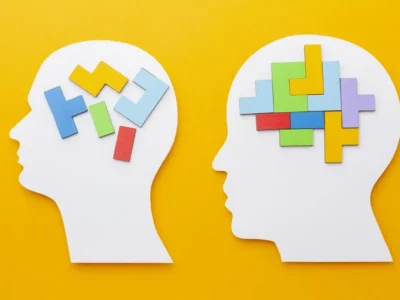

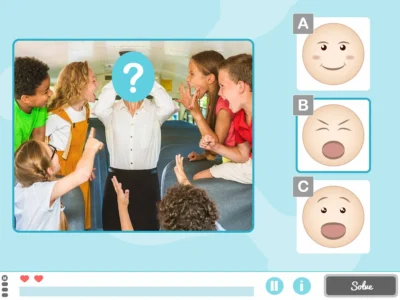
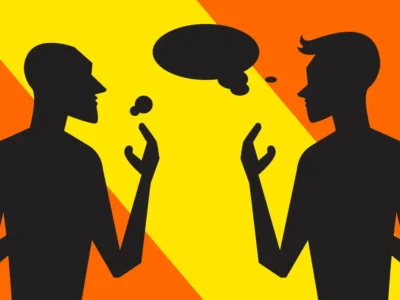
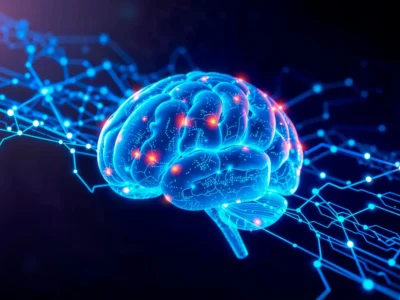
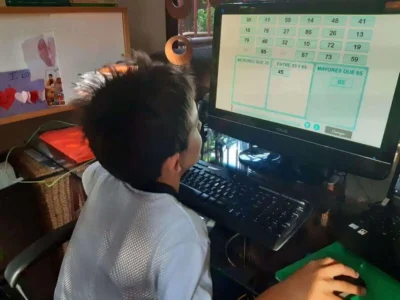
 Gender dysphoria in childhood and adolescence. Treatments and psychosocial consequences
Gender dysphoria in childhood and adolescence. Treatments and psychosocial consequences
I have a problem that happened to me some time ago and now it has come back. I have searched for information and I can’t find anything about what is happening to me.
I feel discomfort and fear, I don’t know exactly how to define it, for not being able to see my face. I mean not being able to see my face like I can see my hands, for example.
It is clear that if I look in a mirror I can see it. But what makes me anxious is not being able to see my face.
Is it a phobia? Why is it happening to me? where can I find information about it?